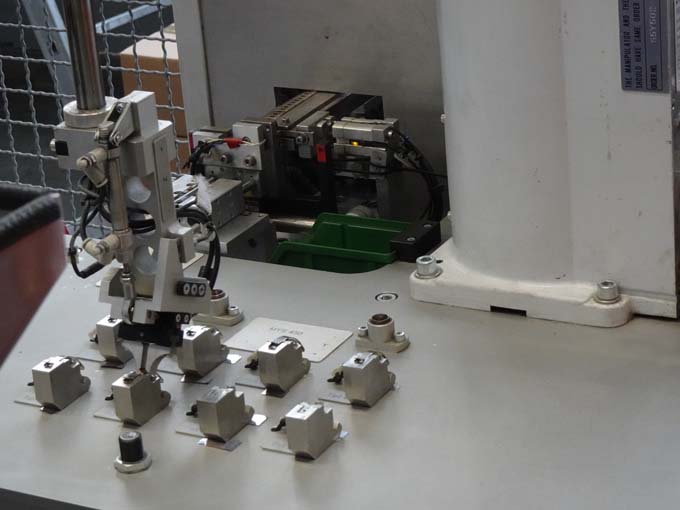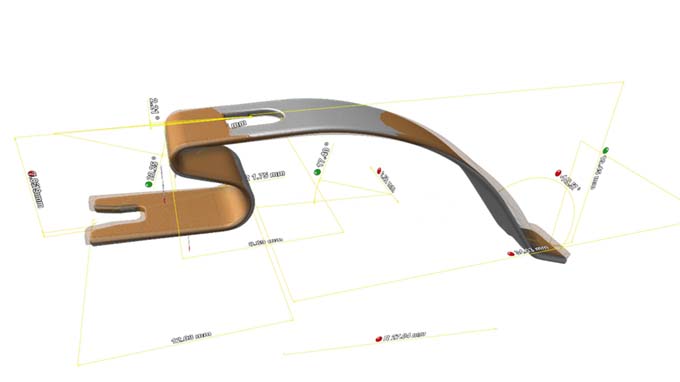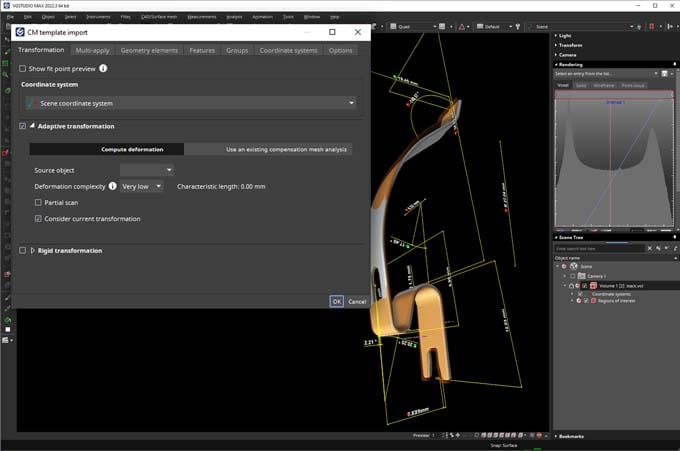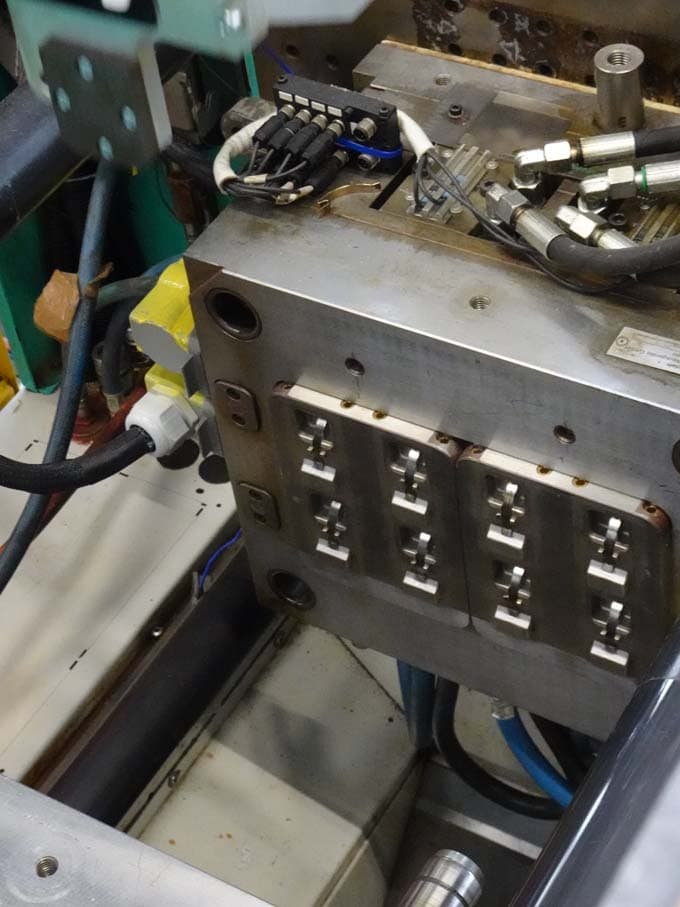Automated CT quality inspection for tool springs
Mold making and injection molding are highly competitive markets. Tight price specifications and low profit margins are the norm. Against this background, manufacturers can only set themselves apart through particularly high quality of the end products. The following case study shows the role played by mold quality control.

The greatest possible quality of a final injection molded product requires perfectly made molds, and the parts made from them must be delivered on time and without production delays. What sounds simple is often very difficult: first and foremost, all sources of underlying part variation must be truly understood. Managing deviations saves time and money in the process, and strengthens customer confidence. At the company F. & G. Hachtel GmbH & Co. KG, Aalen (Germany), computed tomography (CT) analysis is used to predict, measure and control deviations, deformations and metallurgical defects. The software is used for in-process and final part inspection as well as for production automation.
Hachtel operates a wide variety of processes and services under one roof: injection molding, mold making, CT and additive manufacturing. The injection molding area specializes in complicated processes and multi-component parts and materials. Here, automation of mold making is important, as the assembly tools assemble the part directly as it leaves the mold. Customers are primarily from the appliance, electronics and automotive industries. Accurate part qualification is required - and achieved with the help of CT software analysis.
Incoming inspection of the tool springs
We recently received a large batch of defective tool springs. Our inspection system, based on Volume Graphics' software, immediately detected the problem. Since the software is capable of automating the inspection, it was decided that it would be better to reject the entire shipment rather than use the software's Adaptive Gauge feature to identify and save any good parts that might remain in the production lot.

Adaptive measurement templates track the shape of distorted parts against a nominal CAD model, mesh, or ideal part profile derived from a CT scan. Adaptive measurement templates can be used to create a measurement plan for even highly distorted parts by using these data sets or data imported via a product manufacturing information (PMI) file. The measurement points are placed at the optimal positions on the actual part and perfectly follow the deformed shape, allowing analysis and subsequent acceptance or rejection.

The springs are inlays for an injection molding process and receive a plastic tip at one end. Since Hachtel receives hundreds of thousands of these springs, the mold manufacturing process is necessarily highly automated. A positioning system places each spring individually on a transfer plate, from which a lever arm picks up a set of springs and places them in the injection mold. These steps are critical moments in the process: if a spring falls out of the handling or transfer plate, the machine is stopped and production stops. In the best case, this event requires only a little human interaction to replace the spring. But in the worst case, the mold must be cleaned because the plastic has been pushed out of its intended shape.
To reduce the number of potentially costly, regular downtimes, the company decided to inspect all springs on arrival and use the inspection to help decide whether to reject the springs or whether they would work and could be processed. Receiving a shipment of predominantly deformed springs presented the CT inspection software and associated handling functions with a "stress test" that the company felt it could benefit from investigating further.
The taming of the spring by CT quality inspection
Normal CT testing usually uses a classic 3D design with defined dimensions as a basis for comparison. However, even routine springs rarely match the original CAD model perfectly, and spring shapes can vary between batches. This made the initial transfer of measurement templates from CAD and even existing springs difficult and time-consuming to manage. However, the necessary pre-setup was easy to automate, and all samples were pre-arranged via macro. Transfer of the measurement template initially required individual inspection of each sample and readjustment of several geometry elements. Early on, we tried using localized coordinate measuring machines (CMMs) to aid in proper fitting - but this added complexity to the template process and helped little with deformed parts. Some springs were too deformed to allow easy fitting.
However, with the fully automated Adaptive Measurement Template, we were able to ignore a pre-alignment step and did not have to re-align the geometry elements. In fact, after applying the measurement template, we were able to take the target features and geometries and create a "registration" of the exact part shapes. The registration, based on a stored reference system that included part deformation, was now done as part of the transfer. This allowed for leaner and less complex measurement templates.

Time and resource savings
The entire non-automated CT testing process per spring previously took two minutes. Calculating the pre-adjustment took another three minutes. Copying the measurement template took only 15 seconds and manually fitting the elements took another five minutes. The classic approach meant 10 minutes per part, of which the second half was manual labor with unnecessary labor costs.
With the automated adaptive measuring template, the process still consists of a two-minute preparation. Transferring the template takes about five minutes per part. In absolute terms, this saves about three minutes per sample. However, the benefit goes beyond these three minutes of time savings because the process is automatic and requires no further attention or adjustments. So for tool and production builders, this methodology enables complete automation of measurement tasks that previously had to be done manually in some cases.
In the case of the large quantity of warped springs delivered to us, some springs were saved and met the requirements for production. The system not only proved itself for routine production inspection, but in this situation it was also very efficient for unexpected moments of crisis. Automated CT quality inspection saves time and resources and maintains customer satisfaction. It also provides unparalleled insight into the causes of deviations and metallurgical quality.
Author:
Kamil David Szepanski is Head of Technological Development and Product Development CT&AM at F. & G. Hachtel GmbH & Co. in Aalen, Germany.









